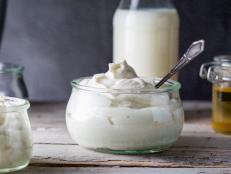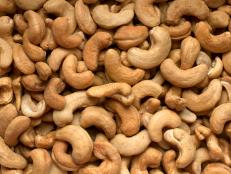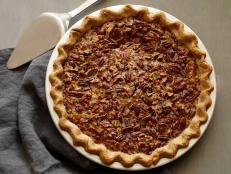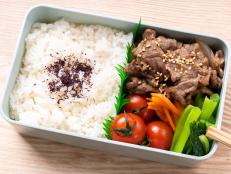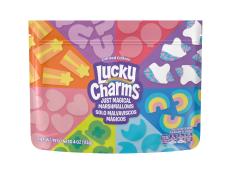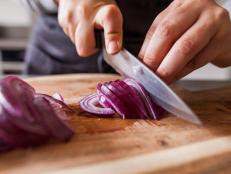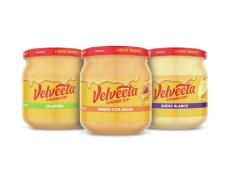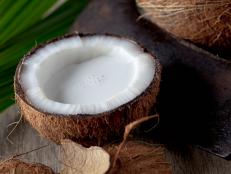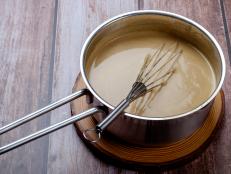The French Pantry
Most of these ingredients are available in grocery stores, but you may want to visit a gourmet or cheese store for better quality or variety.
Butter: Butter is a foundation of classic French cuisine, particularly in dairy producing regions such as Normandy. A little butter adds a specific and special taste to food and when you want it, there's no substitute. There are many different varieties of butters these days, both domestic and imported. Taste and see what you like. Traditionally, French butters had a higher fat content than domestic but this is changing as domestic butter producers begin to work in the French style. We recommend cooking with unsalted butter — it's easier to control the salt in the food — but be forewarned: salt acts as a preservative and unsalted butter will spoil faster than salted.
Oils: Oils are used in French cuisine for both cooking and in vinaigrettes. Unlike Italian cuisine, in which olive oil is the oil of choice, French cuisine often calls for flavorless oils, like peanut, vegetable or canola. Olive oil is generally reserved for Mediterranean-inspired dishes. You'll want to have a bottle of both on hand.
Olive Oil: There is an enormous variety of good olive oil available today, even on the shelves of most supermarkets. Olive oil is produced in most countries on the Mediterranean, including France, but also Italy, Greece, Spain, Israel, Portugal and Morocco, as well as in California. How to choose? Taste is part of the equation — every oil has a different flavor depending on the variety of olive, where it's grown and handled, and how the oil is made.
There are several different grades of olive oils, but only two you're likely to run into: extra-virgin and pure.
- Extra-virgin is from the first pressing of the olives and is the best quality — it also has the highest price tag. A tasty extra-virgin is best for salads.
- Pure is from the second or third pressing of the olives and is processed with heat or chemicals. As it does not have the quality or flavor of extra-virgin, it's commensurately less expensive. Since heat destroys the flavor of the oil, it makes sense to use pure or an inexpensive, supermarket-grade extra-virgin for cooking.
- "Light" is sold by supermarkets to appeal to an American market for whom the taste of real olive oil may be too assertive. This oil has very little flavor. Don't be fooled into thinking it has fewer calories.
Other oils: Keep on hand a neutral oil, such as canola, peanut or vegetable oil. These oils have a higher "smoke point" than olive oil, which means that the oil can be heated to a higher temperature before it breaks down, and thus is excellent for high-heat sautéing as well as for vinaigrettes.
French cuisine uses nut oils, such as walnut and hazelnut, sparingly, for seasoning. These oils, now available in many supermarkets, have a wonderfully nutty taste and fragrance. They are expensive, and extremely perishable, so store them in the refrigerator.
Vinegars: Vinegar (from the French vin aigre, or "sour wine") is made by fermenting an alcohol, usually wine. French cooks use a variety of vinegars, in vinaigrettes, for salads and vegetables, as well as in cooking. White wine (or Champagne) vinegar is lighter in taste than red wine vinegar. Get yourself a bottle of both. Sherry vinegar has a very pleasant, mellow flavor that is lovely in salads, particularly with mushrooms and nuts.
Chicken Broth: Buy a few cans or boxes of low-sodium chicken broth for recipes that call for chicken broth; some labeled "organic" have a particularly good flavor. Of the commercial broths (chicken, beef and vegetable), chicken tends to have the best flavor, even in recipes that call for beef broth.
Dried Herbs: French cooking has always traditionally relied on dried herbs, as well as fresh. Dried bay leaves and thyme are good to have on hand; dried thyme (either leaves, or on the branch) may be used in a bouquet garni when you don't have fresh.
Canned Tomatoes: Canned tomatoes are crucial to have on hand for cooking, and it's far better to use canned tomatoes than fresh if the fresh are under-ripe and tasteless. Buy whole, canned plum tomatoes, and when the recipe calls for chopped, chop or crush by hand. Tomatoes for sauce may be pureed in a food processor. Plum tomatoes labeled "San Marzano" are a variety grown around Naples and are considered by many to be excellent tomatoes for sauce.
Canned and Dried Beans and Lentils: Lentils and beans are used in soups, salads and as a side dish. It's great if you have the time to cook the dried beans yourself (the flavor and texture are superior to canned) but since most of us don't, canned make an excellent, quick substitute. Lentils take only 15 to 30 minutes to cook, so there's no need for canned — buy dried.
Rice: French cuisine traditionally uses long-grain, white rice for cooking.
Mustard: Dijon mustard is often used to emulsify and flavor vinaigrettes, as well as for cooking. You may want to pick up a jar of grainy mustard as well as the traditional smooth. To maintain, store both smooth and grainy mustards in the refrigerator after opening.
Cheese: France produces a wealth of cheeses, many of which never find their way to the United States. Three that are often used in French cuisine, and which keep well in the refrigerator, are Gruyere, its cousin Emmentaler, and Parmesan.
- Gruyere is a firm, nutty tasting cow's milk cheese that is delicious as is, in sandwiches, on a cheese plate, or eaten as a snack.
- Emmentaler is another cow's milk cheese with a similar texture, the taste of which bears a family resemblance to Gruyere. Grated, both are used to create a rich cheesy topping on gratins, to add character to potato gratins, to flavor white sauces, and in fondue. Wrapped well, both will last several weeks in the refrigerator.
- Parmesan, an Italian cow's milk cheese, is also often grated for use in French cuisine, as a topping for gratins, and to flavor sauces. The best quality Parmesan is called Parmigiano-Reggiano and it is quite expensive; Grana Padano doesn't have quite the same glorious flavor but is much cheaper, and an excellent substitute.
Cream: A small amount of cream whisked into pan juices makes an instant sauce for a weekday meal of sautéed chicken, fish, or veal. It's also indispensable for certain gratins. The French use two kinds of cream:
- Crème fleurette, a sweet cream like our heavy or whipping cream.
- Crème fraiche, which is a thick, tangy tasting product. Crème fraiche tastes something like sour cream but somewhat less sour, and with its higher butterfat content, it can be boiled without curdling. Imported crème fraiche is often available at gourmet stores. Sour cream or buttermilk can be substituted in recipes if the dish is not to be cooked; or use heavy or whipping cream, and flavor with a little lemon juice.
Onion, carrot, celery, shallot, garlic and leek: Many classic French stocks, stews, soups and braises begin with a combination of onion, celery, and carrot (mirepoix), sometimes with the addition of garlic, leek and/or shallot. Finely chopped shallots are also wonderful in vinaigrettes, adding a particular sharp, French taste. Store garlic, shallots, and onions at room temperature, and carrots, leeks, and celery in the refrigerator. Onions and garlic should be firm, with no green sprouts growing out of the bulb.
Brandy and cooking wine: French cuisine is justly esteemed for its sauces, and brandy and wine form the foundation of many of them. Even if you don't want to spend a lot of energy on saucing, a few tablespoons of a quick pan sauce can make the difference between something ho-hum, and something really special: Sauté a piece of meat, chicken, or fish, and remove it from the pan; deglaze with a little wine or brandy to pick up the flavorful browned bits that cling to the bottom of the pan. Add a touch of cream, or a bit of butter to thicken and enrich the juices, and you've got something that tastes like you spent all day on it.




























